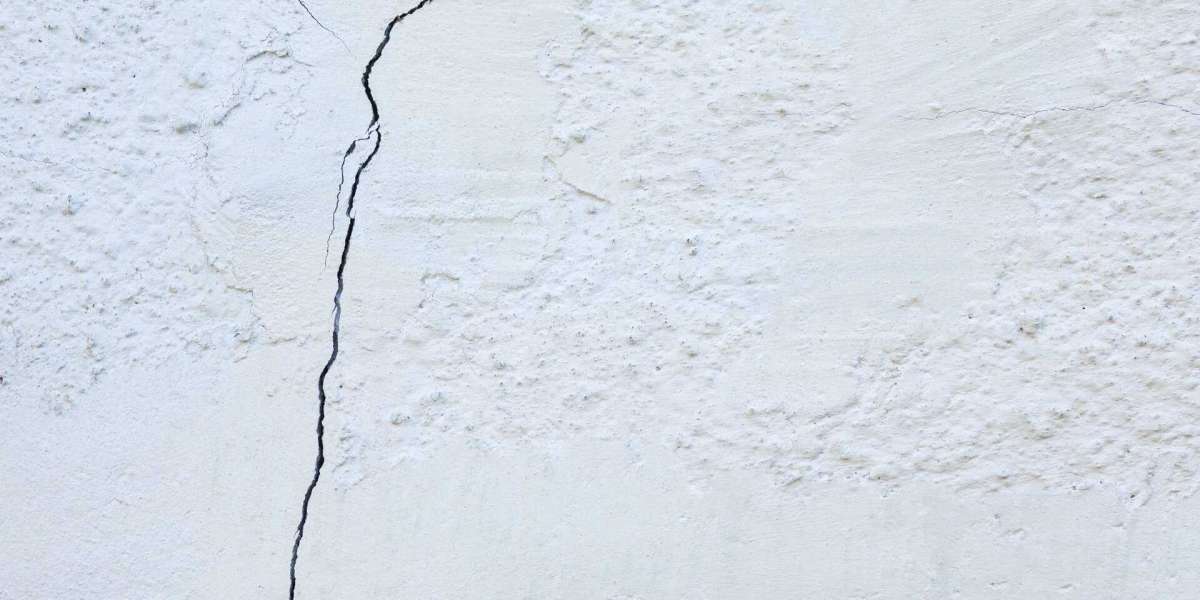Introduction
You’re walking around your home and spot a small crack running along the base of the wall. You pause. Is it serious? Is your house in danger? Or is it just a harmless cosmetic flaw?
Foundation cracks are one of those home issues that most people notice but few act on right away. The truth is, cracks in your foundation are more than just marks on concrete; they’re signals. Sometimes they whisper. Sometimes they scream. But either way, they’re always trying to tell you something about what’s happening beneath your home.
In this blog, we’ll help you decode those messages. We’ll look at what causes foundation cracks, when to worry, how to fix them, and most importantly how to protect your home from further damage.
Not All Cracks Are Created Equal
Let’s start by understanding the different types of cracks and what they might mean.
1. Hairline Cracks
These are thin, superficial cracks that often appear after concrete cures. If they're not growing or accompanied by moisture, they're usually cosmetic. But it’s still smart to monitor them.
2. Vertical Cracks
Typically caused by natural settlement or shrinkage. If they're narrow (less than 1/8 inch), they may not pose immediate danger. However, widening or leaking vertical cracks could indicate pressure or drainage issues.
3. Diagonal Cracks
These cracks might suggest that one side of your home is settling more than the other. Often caused by poor soil conditions or improper drainage. Diagonal cracks warrant a closer look, especially if they grow or appear in multiple areas.
4. Horizontal Cracks
This is the one to watch out for. Horizontal cracks often mean the foundation wall is under too much pressure possibly from expanding soil or water buildup. These cracks can lead to bowing walls and structural failure if not addressed quickly.
5. Stair-Step Cracks in Brick or Block Walls
Common in homes with masonry foundations. These indicate shifting and movement, particularly if they’re wider at one end.
What Causes Foundation Cracks?
Your foundation is designed to support your entire home but it’s not immune to the forces of nature and time. Common causes of cracking include:
Soil Movement: Expansive soils like clay can swell and shrink based on moisture levels, leading to pressure that causes the foundation to crack.
Poor Drainage: Water buildup around the base of your home adds pressure to foundation walls.
Tree Roots: Roots can grow under your foundation and create upward pressure, resulting in cracking or lifting.
Freeze-Thaw Cycles: In colder regions, water in the soil freezes, expands, then thaws—causing ground movement and cracks over time.
Improper Construction or Compaction: If the soil wasn’t properly compacted before construction, your home may settle unevenly.
Age and Wear: Even a well-built home isn’t immune to the long-term effects of time and natural wear.
Signs Your Foundation Needs Attention
Beyond visible cracks, here are some subtle (and not-so-subtle) clues that something may be wrong with your foundation:
Doors or windows that suddenly stick or don’t latch properly
Uneven or sloping floors
Gaps between walls and ceilings
Cracked interior drywall
Water seeping into the basement or crawl space
Musty odors or mold growth in the lower levels
These signs often go hand in hand with foundation cracks and shouldn’t be ignored.
Why It’s Important to Act Fast
Small cracks can turn into big problems quickly. A minor issue today could lead to major structural damage tomorrow. The longer you wait, the more costly and complicated the repair can become.
Plus, foundation problems can reduce your home’s value, scare away potential buyers, and cause a ripple effect across your entire structure from plumbing to roofing.
Early detection and repair can save thousands of dollars in the long run.
The Right Way to Repair Foundation Cracks
There isn’t a one-size-fits-all fix for foundation cracks. The right solution depends on the cause, size, and location of the crack.
Here are some common repair methods:
1. Epoxy or Polyurethane Injections
Best for narrow, non-structural cracks. These materials fill and seal the crack to prevent water intrusion and reinforce the structure.
2. Carbon Fiber Reinforcement
Ideal for horizontal cracks or bowed walls. Carbon fiber straps are applied to stabilize the wall and prevent further movement.
3. Wall Anchors or Brace Systems
Used for more serious issues where a wall is bowing inward. Anchors help pull the wall back to its original position.
4. Underpinning with Piers
If your foundation is settling, steel piers or helical piers are installed to support and lift the foundation back into place.
5. Exterior Waterproofing
In some cases, cracks are symptoms of bigger drainage problems. Waterproofing the exterior foundation wall and improving grading can prevent future issues.
DIY vs. Professional Help
There are a lot of “quick fixes” available at home improvement stores but they usually mask the problem rather than solve it. Filling a crack with sealant might hide it from view, but it won’t address the root cause.
If your home is showing multiple signs of foundation trouble or if cracks are growing—it’s time to call in the pros. A licensed foundation repair specialist can inspect the area, diagnose the cause, and recommend the right fix.
Real-Life Scenario
A couple in St. Louis noticed diagonal cracks forming near the corners of their basement walls. They assumed it was just settling and ignored it for a year. Eventually, those cracks started letting in water, and the wall began to bow. What could have been a minor repair turned into a major reinforcement project costing several thousand dollars more than if they’d addressed it early.
Peace of Mind Starts Below Ground
Foundation cracks don’t mean your home is falling apart but they are signs you shouldn’t ignore. Whether you’re seeing thin hairlines or full-on splits, paying attention early can help you avoid much bigger problems down the road.
Think of it this way: Your home’s foundation is like the root of a tree. If there’s something wrong with the root, the whole structure above is at risk.
Conclusion
Cracks in your foundation aren’t just cosmetic they’re your home’s way of asking for help. From small repairs to full-scale structural reinforcement, addressing the issue early can prevent further damage and restore your peace of mind. If your property is showing signs of trouble, it’s worth considering Foundation Crack Services in St. Louis from a trusted local team.














